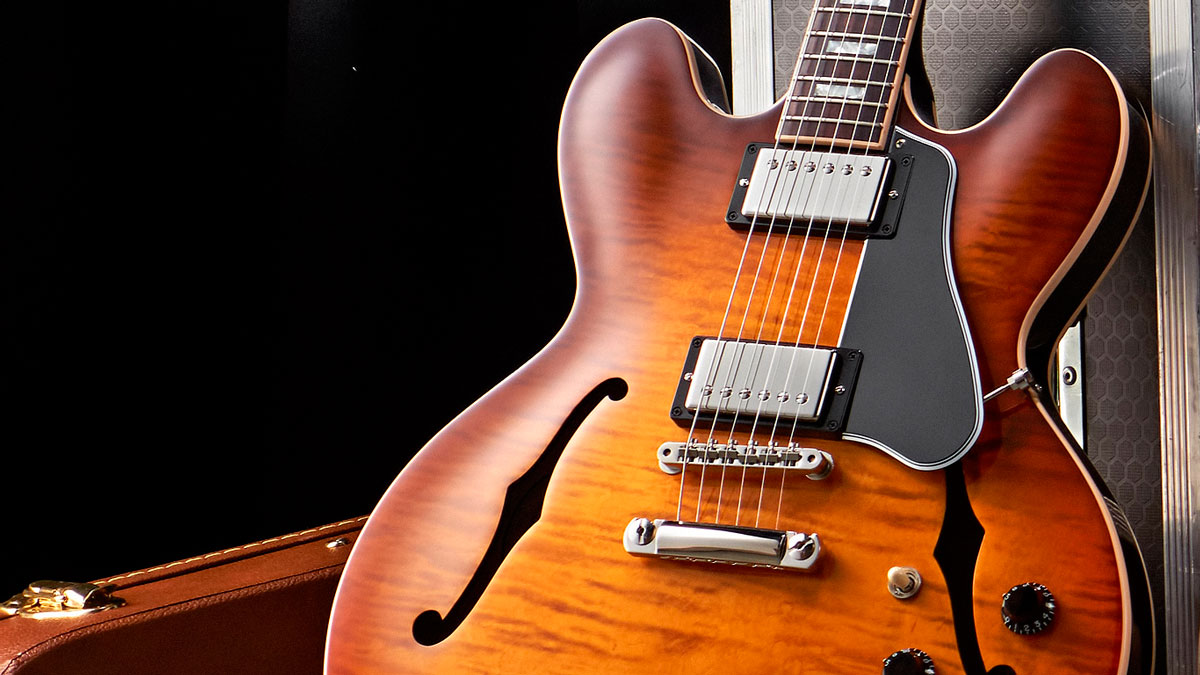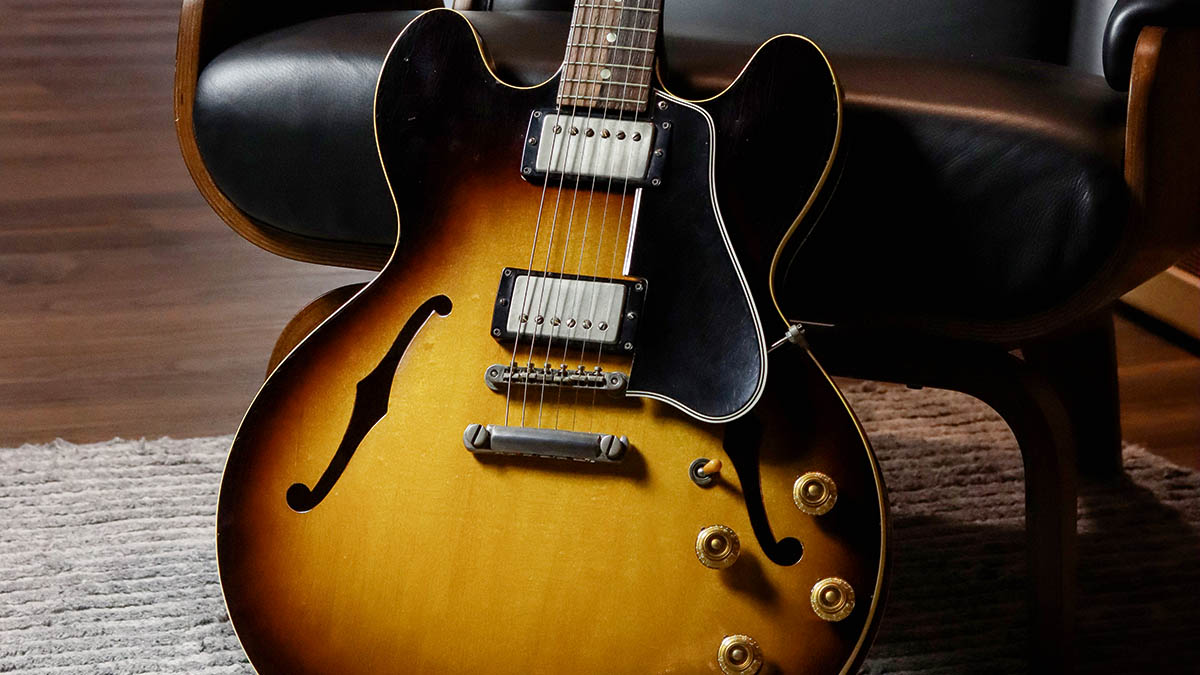
During Ted McCarty’s tenure as president of Gibson from 1950 through 1966, the company developed some of the greatest and most enduring electric guitar designs of all time.
In fact, literally every electric model Gibson offers today was designed by McCarty and his team during this golden era, including the Explorer, Firebird, Flying V, Les Paul and SG. These are all timeless models, but McCarty’s semi-hollowbody design for the ES-335 and its numerous variants may be his greatest achievement of all time.
Gibson introduced the ES-335 – the music industry’s very first semi-hollow electric model – in 1958, only six short years after the company’s first solidbody model, the Les Paul, made its debut.
The 335 was a natural progression of ideas sparked by input from players, who wanted a “best of both worlds’’ instrument that combined the best features of solidbody and hollowbody electrics, namely the former’s ability to be amplified to generous volume levels without feedback and the latter’s warm, round tones and acoustic-like resonance.
Gibson’s thinline models like the Byrdland introduced in 1955 were a first step toward this goal, but the semi-hollow ES-335 was the ultimate refinement and, as a result, became an iconic electric guitar model.
The 335’s key feature is a solid block of maple extending through the body underneath the strings from the neck joint to the tail block, providing a truly solid center. This block is encased inside a slim hollow body, dividing it into two resonant chamber “wings” on either side of the strings.

A generous double cutaway design allows easy access all the way up the neck to the 22nd fret, something even the “radical” new Fender Stratocaster model didn’t quite offer back in the day. The crowning touch was a pair of humbucking pickups, which had just started appearing on Gibson guitars around this time.
The 335 became the blueprint for several successful variants, like the fancier ES-345 and ES-355, one of two Trini Lopez models introduced in the mid-Sixties and much later the signature B.B. King Lucille model.
Early 335 guitars often came with Bigsby or Maestro vibrato or trapeze tailpieces, but most players agree that the “money” version is the one with a standard stop tailpiece.
While all of Gibson’s most popular solidbody models have come and gone and eventually come back again, the ES-335 has remained a consistent fixture of its product line since its intro in 1958, mainly due to its incredible versatility.
The list of guitarists who have played an ES-335 at some point in their careers encompasses pretty much every style except classical and flamenco, and that wouldn’t even count the variants like the ES-345/355 models played by blues and rock ’n’ roll icons like B.B. and Freddie King, Otis Rush and Chuck Berry or the Trini Lopez model favored by Dave Grohl.
The following is a select list of songs prominently featuring the 335:
- B.B. King – The Thrill Is Gone (Live at the Regal, using a custom 335 modified with a Varitone switch)
- Eric Clapton/Cream – Badge
- Alvin Lee – I’m Going Home
- Ritchie Blackmore/Deep Purple – Child in Time
- Alex Lifeson/Rush – Working Man
- Andy Scott/Sweet – Action
- Larry Mr. 335 Carlton/Steely Dan – Kid Charlemagne
- Eddie Van Halen – And the Cradle Will Rock…
- Eric Johnson – Cliffs of Dover
- Pepper Keenan/Down – Stone the Crow
- Peter Hayes/Black Rebel Motorcycle Club – Red Eyes and Tears
- Chris Stapleton – Second One to Know







